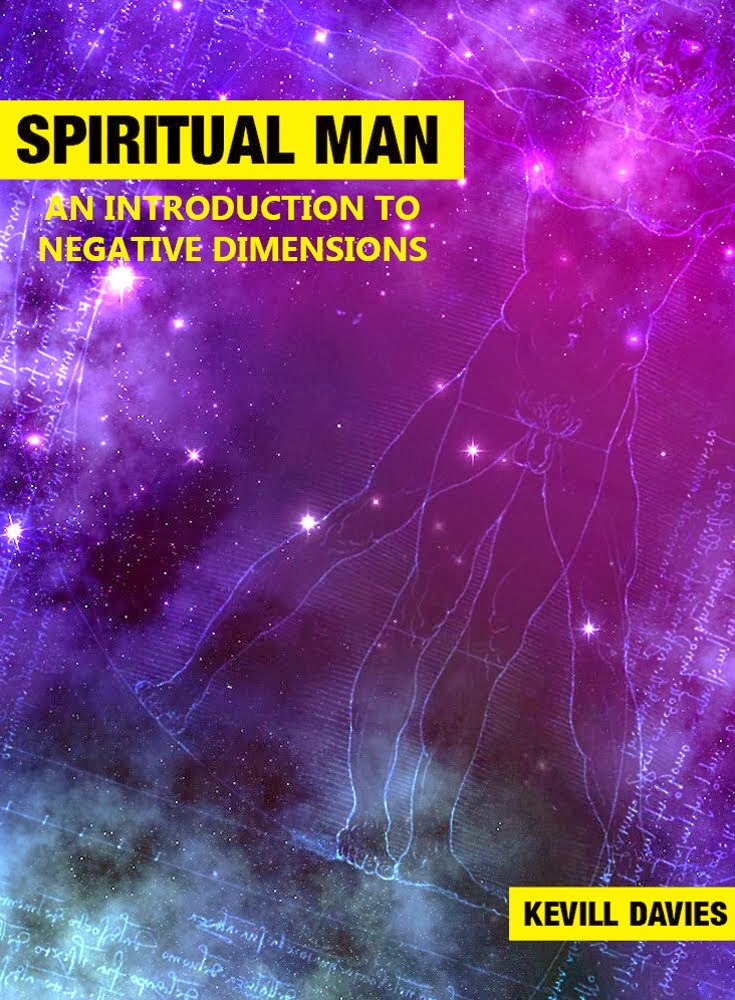TIME FOR ANOTHER LOOK AT TIME
Hebrews 11.1.
Faith is being sure of what we hope for and certain of what we
do not see.
In his bestselling book, 'A Brief History of Time', the
cosmologist Professor Stephen Hawking suggested that there may be two
dimensions of time, the one we know and a second which he identified as
'imaginary'. He needed to do this in an attempt to avoid the problems posed by
singularities in his theories and also to sidestep the question of 'What
happened before the Big Bang?'
The problem was that according to conventional theory, time and
space were created with the ‘Big Bang’ and to ask about time before that was
futile. However, scientists are now thinking the impossible and looking at new
theories to explain the creation and workings of our universe. So am I.
In my booklet, ‘Spiritual Man: An Introduction to Negative
Dimensions’, I have proposed such a new theory and hopefully demonstrate how
some of the mysteries of the world might be explained. In particular I
demonstrate that each of our recognised three spatial dimensions and one of
time are, in reality, composed of two additional dimensions, the ‘unreal’ and
the ‘imaginary’, the latter as used by Hawking. I show that although in our
normal perception of the universe these extra dimensions cancel each other out,
they, nevertheless, play a part in life. But what about proof? Is there any
evidence for these additional dimensions? I believe that time holds the key.
The three aspects of time have been recognised before. Augustine
of Hippo tried to equate them to the Holy Trinity whilst Thomas Aquinas named
them and associated them with men, angels and God. It is easy to divide time
into three parts, we are constantly aware of them, the present time, (the here
and now), the future and the past and I depict them as follows: the present, I
refer to as the ‘real’ time, ‘t’: the future by ‘imaginary’ time, ‘it’ where
‘i’ is the square root of minus one and the past as ‘unreal’ time, ‘-t’.
The following, in
italics, can be skipped by those who don’t wish to consider the maths.
The three aspects
of time can be represented graphically as we do the three spatial dimensions,
each acting mutually perpendicularly to each other. Using Cartesian coordinates
and exercising Pythagoras theory one can calculate a perceived value of time, ‘T’,
as follows:
T= ±√[t² +
(-t)² + (it)²]
Solving this we
see that:
T= ± t
Neglecting, for the moment, the negative value, this is a
statement that the time we experience is in fact the same as the ‘real’ time. And
so it should, because although we know about the future and the past we cannot
directly experience either, in the same way that we cannot sense the other, ‘unreal’
and ‘imaginary’, dimensions of space. This fact is the crux of my argument that
the time we experience is inextricably bound up with historic (‘unreal’) and
future (imaginary’) time and although they ordinarily cancel each other out
they, nevertheless, play a part in our lives.
If we accept that the future effortlessly morphs into the present and immediately passes on to be the past, we risk the certainty that the present, existing as it would seem to be between a positive value and a negative could equate with zero. That is the present will have no value. However, if we believe, as I do, that the future and the past exist in different dimensions, the problem does not arise.
If we accept that the future effortlessly morphs into the present and immediately passes on to be the past, we risk the certainty that the present, existing as it would seem to be between a positive value and a negative could equate with zero. That is the present will have no value. However, if we believe, as I do, that the future and the past exist in different dimensions, the problem does not arise.
It is also my contention that ‘unreal’ time is responsible for the
brain’s ability to memorise and that ‘imaginary’ time allows humans to solve
problems, appreciate art, love and affect the other ineffable traits of the
human condition. This is no harder to acknowledge than that the future and the
past exist.
Can we infer other properties of time with this new
understanding? According to the ‘Big Bang’ theory of creation, ALL of
space-time is created at the beginning. This immediately tells us that time
according to this model is finite; there IS an end. This fits in well with the
religious faith in an ‘end of time’ scenario; the Day of Judgement.
However, in my theory, there is no end of time; the universe
simply grows and coalesces with others, expanding into infinite and eternal nothingness,
what I refer to as the ‘Pleroma’.
What about time travel? At the point of creation, the universe
has no past, therefore ‘unreal’ time, ‘-t’, can be set at zero. The above
equation then gives us: T = 0. In otherwise the universe’s clock is set ticking
at its inception. On earth the clock has reached nearly fourteen billion years
but at the rim where space-time is being created the clock is set at zero. Therefore
to travel back in time, to a more primitive period one must travel towards the
rim and inversely one must travel back to see the future.
It is easier to imagine one can travel back in time by visiting
our sister universe where ‘-t’ time plays a role. Remember the equation above
where T = ± t. However it must also be recalled that the ‘unreal’ time act
perpendicularly, not linearly, with the time, ‘t’, we experience and measure.
How do the additional dimensions of time affect us on earth? I contend
that their influence can be seen in the workings of the brain. The ‘unreal’
time component allows us to recall, whilst the ‘imaginary’ time component
allows us to contemplate the future. Consider the example I give in my book
concerning the antelope and the lion:
The antelope spots a lion in ‘real’ time, ‘t’ the here and now. ‘Unreal’
time, (-t) recalls (from the past) that lions are dangerous and ‘imaginary’
time, ‘it’, speculates on the future and a course of action; flight or fight.
All the processes work in parallel and are extremely quick offering the
antelope a better hope for survival. The human brain works the same but offers
more options. The example, however, demonstrates the intimate connection
between the three modes of time and the extra dimensions I suggest.
For more information on how the dimensions of time impact on our
lives please download my book, ‘SPIRITUAL MAN: AN INTRODUCTION TO NEGATIVE
DIMENSIONS’ from Kindle or Kobo.






No comments:
Post a Comment